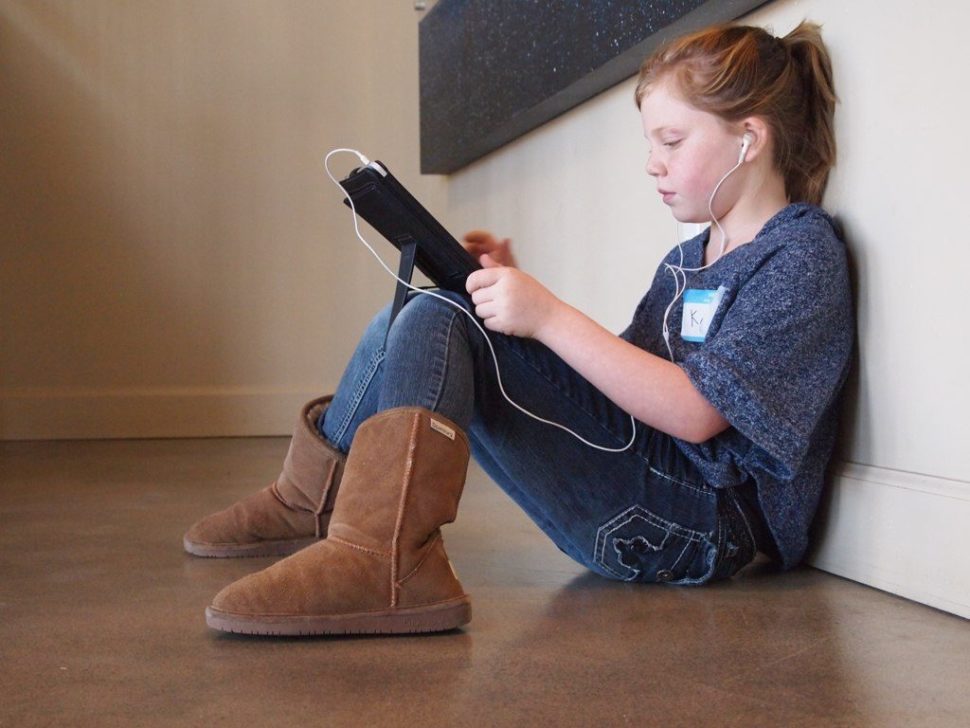They swiped happily ever after: Of Fairytales and Tablets – An Interview with Bård Engen, Tonje Giæver and Louise Mifsud

Too often tablets are used for individual learning. Collaborative approaches need more attention.Bård Engen, Tonje Giæver and Louise Mifsud developed a project that turns children into collaborative content creators, using tablets as a stage for storytelling. (Photo credit: Brad Flickinger, flickr creative commons)
This summer, the AACE Special Interest groups Design and Trends conducted a joint call for abstracts for the Special Issue on Mobile Technology for the Journal of Interactive Learning Research. A total of 16 abstracts were selected for the next round of reviews to submit full paper proposals. We present some of the most original submissions through interviews on Innovate Learning Review.
More and more school-aged children have the opportunity to perform learning activities using mobile devices, both inside and outside the classroom. Within the United States, a growing number of school districts have incorporated tablets into classroom instruction. Many mobile learning settings support mainly individual learning, using mobile devices to deliver content rather than providing learners with the opportunity to interact with peers.
Bård Engen, Tonje Giæver and Louise Mifsud developed a project that turns children into collaborative content creators, using tablets as a stage for storytelling.
How did you get the idea for this project?
We had studied pupils using iPads over two years, in 2012, where our observations concluded that the most common use was based on drill-based apps. In a conversation with the teacher we discussed using the iPads as a tool for producing, and suggested the app “Book Creator”. The teacher said she would think about it, and came up with the idea of using Book Creator to create fairy tales in groups with the class. It has to be said that the school at the time did not have one-to-one iPads but 60 iPads that the school shared.
How exactly did you implement the tablet project across the curriculum?
The teacher decided to use a whole week where the pupils worked solely on the project, with the exception of Physical Education lessons. The meant that the pupils focused on creating the fairytale the whole week. The fairytale creation included use of Arts & Crafts, Norwegian language, Social Studies in the form of reading fairy tales from different countries.
Did the children use mobile tech in unexpected ways? What was the most surprising result of your research project?
We were at the outset skeptical to five or six pupils sharing an iPad, but understood that the iPad was a great tool for collaborating. The pupils worked together with very little support from the teacher. We were also surprised at how easily the pupils adopted the technology and discovered new possibilities in enriching their story, such as including videos in their book.
Did you observe differences based on socioeconomic background, gender or Norwegian native resp. non-native speakers?
The school is a multi-cultural school where, at the time, there were 28 languages spoken. We did not observe any differences based on socioeconomic background, gender, ethnic background etc. All pupils contributed to the story-creation, due to the teacher’s rules where all pupils had to contribute by writing at least one page, and all pupils had a character.
How would you like to see this research or projects like this replicated in other schools and potentially in other countries?
The trend in Norwegian schools seems to be towards investing in one-to-one tablets. While this is an important step in giving pupils the possibility to use a digital tool across different arenas, both at home and at school, an important 21st century skill the ability to collaborate using digital tools. It would be interesting to see whether, if other institutions replicated the project, the findings would be similar.
Are there opportunities for collaboration with you and your team? Are the lesson plans available for others to use?
We welcome collaboration and view this as an enrichment to our team in Oslo. The teacher still works at the school, and we’re sure that she would be willing to share her lesson plans if asked
What’s next for you and your team?
We are currently working on a project mapping student teachers’ development of digital competence and cyber ethics with colleagues from the Universities of Malta, Valencia, Oslo and Limerick. The project is funded by ERASMUS+. We are also planning to extend this project to study the use of wearable technologies together with the use of tablets, and the possibilities, and challenges, that this gives learning.
About the Researchers

Bård Engen is an Associate Professor at the Faculty of Teacher Education and International Studies, Oslo and Akershus University College of Applied Sciences. His background is in sociology and educational science. His research interests lie in the educational use of mobile technologies and in digital competence and cyber ethics.
Tonje Hilde Giæver is an Associate Professor at the Faculty of Teacher Education and International Studies, Oslo and Akershus University College of Applied Sciences. Her background is in informatics and educational science. Her research interests lie in the educational use of mobile technologies and in digital competence and cyber ethics.
Louise Mifsud is an Associate Professor at the Faculty of Teacher Education and International Studies, Oslo and Akershus University College of Applied Sciences. Her background is in educational science. Her research interests lie in the educational use of mobile technologies and in digital competence and cyber ethics.
